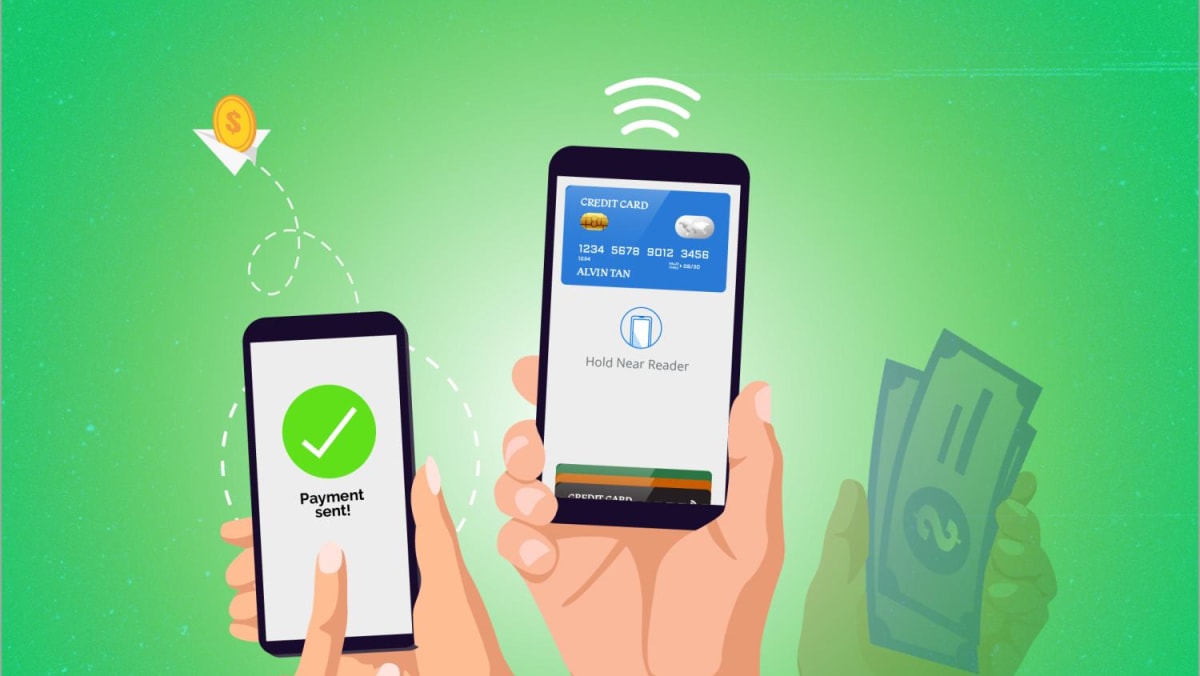The Covid-19 pandemic has accelerated the adoption of electronic payments, with many users choosing not to carry cash around. However, seniors are less inclined to adopt cashless payments while recent service disruptions and rise of scams have also raised concerns among younger users.
THE BIG PICTURE
As of 2022, more than 210,000 merchants operating across various service industries in Singapore, including retail stores in shopping malls and food stalls at hawker centres, offer SGQR as a means of payment acceptance, said Chairman of the Monetary Authority of Singapore Tharman Shanmugaratnam in Parliament last year.
This accounts for over 90 per cent of merchants in Singapore, he added.
The SGQR which was launched in September 2018, combines multiple payment schemes into a single label.
Singapore is not the only country which is moving steadily towards cashless payments.
Several countries such as Sweden and China already have high e-payment adoption rates.
According to Sweden’s central bank Riksbank, the proportion of Swedes using cash fell from 39 to 9 per cent from 2010 to 2020.
Mr Nima, a Swede who moved to Singapore five years ago and is working in the financial technology industry, noted that Swedes in general, including the seniors, are more open to adopting new technology.
“The Swedes are okay with taking risks — they jump onto new technologies and new opportunities, seeing the upside instead of the risks,” said the 41-year-old, who declined to give his full name.
In China, many shops and even taxi drivers refuse to accept cash.
Professor Lawrence Loh, director of the centre for governance and sustainability at NUS Business School, said that vendors in China were offered numerous incentives to adopt WeChat and Alibaba-owned Alipay.
This resulted in many stores adopting both payment systems and even rejecting cash, leaving people, including seniors, with little choice but to learn how to pay with their phones.
THE BOTTOMLINE
Against the backdrop of such disruptions in services, business and technology experts told TODAY that having multiple payment options available is one way to ensure the resilience of the e-payment landscape here.
Associate Professor Liang Zhen Kai from the School of Computing at the National University of Singapore (NUS) said that he has two bank accounts — one of which he tops up regularly with a smaller amount for spending.
The other is a bank account that he uses only to save money.
Dr Douglas Streeter Rolph, a senior lecturer of finance at the Singapore University of Technology and Design, added that having multiple options would also allow for financial inclusion.
For instance, a store that accepts only Apple Pay may exclude those who could not afford an Apple smartphone.
Experts also agreed that Singapore should not go fully cashless as cash still plays an important role here, especially among the elderly.
It also serves as a “fallback” when e-payment systems are down.
Ms Lim May-Ann, director of the Fair Tech Institute at technology consultancy firm Access Partnership, said that one of the biggest risks in becoming a cashless society would be to “place our trust in a system with a single point of failure”.
If there were an electricity or internet outage for instance, people would not be able to carry out payments.
“To be a truly resilient country, there should be alternatives available to us — slower and perhaps more cumbersome, but we have to build these redundancies if we are to build a resilient financial ecosystem,” she said.
E-wallets which do not require an internet connection could also be another way to increase the resilience of the e-payment infrastructure, where the internet is the basic block of all cashless systems.
Assoc Prof Liang said that such offline wallets could possibly use Near Field Communication (NFC) technology to transfer funds from one smartphone to another by tapping them together.
NFC is a technology that allows devices like phones and smartwatches to transmit data wirelessly over short distances using radio waves.
It is used for e-wallets such as ApplePay as well as credit cards, allowing users to tap their phone or card onto the payment terminal to pay.
If the terminal is connected to a phone line, an internet connection is not required to carry out the payment.
Although offline wallets could bring benefits such as facilitating payments in the event of an internet outage, Assoc Prof Liang does not foresee them entering the market anytime soon as the technology is still underdeveloped.
Referring to the need for options, alternatives, and resilience, Ms Lim said: “We can aim for a cashless society, but let’s not miss the forest for the trees.”


